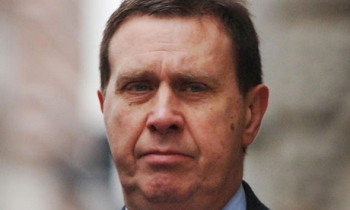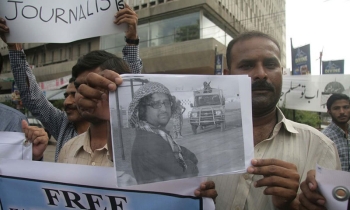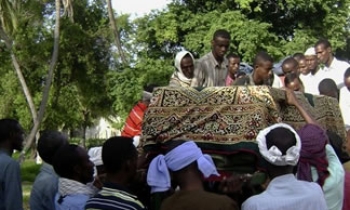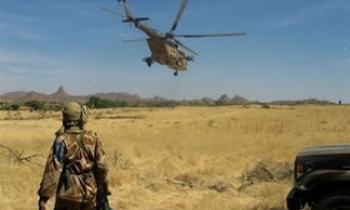The body of slain Afghan journalist Ajmal Naqshbandi was buried Wednesday in Afghan capital Kabul as hundreds of mourners attended his funeral. Naqshbandi, 26, a freelance journalist, was beheaded on April 8 by Taliban extremists as the Afghan government refused to release Taliban prisoners in exchange.
Hundreds turned out to pray in the street and see the journalist’s coffin lowered into the sun-baked dirt of a small hilltop graveyard near his home, Reuters reported. “For a foreigner, they can release five Taliban,” said his weeping 14-year-old brother-in-law, Mussadaq. “For a local and a Muslim, they can’t release any.”
“When Ajmal was arrested by the Taliban, I cried so much,” said his 20-year-old cousin, Humayun. “Now we have lost him. “If the government had released some Taliban, he would be here today,” he added before the simple plywood coffin draped in green and black arrived at Naqshbandi’s home for a brief ceremony before his burial, the Reuters report said.
Naqshbandi was kidnapped in southern Afghanistan on March 5 together with an Italian journalist Daniele Mastrogiacomo and their driver, Sayed Agha. Agha was beheaded, while Mastrogiacomo was freed after the Afghan government released five Taliban members.

The body of Naqshbandi was delivered Tuesday to Kandahar’s hospital. The physician on duty confirmed the identification and said the cause of death was a slit throat, acording to the New York Times. The physician, who identified himself only as Dr Zafar did not explain how he had confirmed Naqshbandi’s identity or provide details on who had taken his body to the hospital.
Mastrogiacomo was released March 19 after Afghan President Hamid Karzai agreed to free five Taliban prisoners, including at least two senior members of the fundamentalist Islamic movement. The swap provoked strong protest from critics who said the deal would encourage more abductions.
Since then, 13 Afghans and two French aid workers have been kidnapped. Taliban rebels have demanded further releases of their jailed associates in exchange for some of the hostages. Naqshbandi’s captors had offered a similar swap for him, but Karzai on Friday last ruled out any more deals.
“When we demanded the exchange for the Italian journalist, the government released the prisoners, but for the Afghan journalist, the government did not care,” Shahabuddin Atal, a purported Taliban spokesman, told the Associated Press. Atal said that his group beheaded Naqshbandi in the Garmsir district of Helmand province Sunday afternoon.
Karzai said he agreed to a swap for Mastrogiacomo out of gratitude for Italy’s commitment of 1,800 troops in Afghanistan and because Italian Prime Minister Romano Prodi had called him “several times and asked for cooperation.”

President Karzai Monday said the government had tried to win the release of Naqshbandi. “The government made lots of efforts to free Ajmal but the kidnappers barbarically killed him before their self-set deadline ended without making any particular demand for his release,” Karzai said. “The release of a foreigner and beheading of two Afghans by the Taliban proves that the Taliban, under orders from strangers, have decided to kill Afghans and destroy Afghanistan,” he said.
Gino Strada, founder of the aid group Emergency, which helped secure Mastrogiacomo’s release, accuses Prodi of doing too little to save Naqshbandi. Strada branded the Italian government an accomplice in his death.
But the prime minister rejected Strada’s criticism, saying Italy had done “everything possible” for Naqhbandi. “We really did everything we could, what a government must do,” said Prodi.
Emergency pulled its international staff out of Afghanistan on Wednesday in protest at the arrest of one of its Afghan employees. Emergency, Reuters reported, said its 38 international staff—30 of them Italians – had shifted base to Dubai for the time being.

“There they will decide what to do next,” an Emergency spokesman said in Milan. Rahamtullah Hanafi, who runs one of the charity’s Afghan hospitals and acted as a go-between with the Taliban during Mastrogiacomo’s abuction, was arrested by local security forces on March 20 on suspicion he played a part in the kidnapping.
Afghan intelligence chief Amrullah Saleh had told Italian daily Corriere della Sera that Hanafi had connections with the Taliban and al Qaeda.
Strada , however, told the Voice of America (VOA) in Rome that Italy knew that Hanefi was trustworthy. He said that Hanefi, in the case of a prior kidnapping in November lats year of an Italian photographer, took a $2 million ransom paid by Italy and went to collect the freed hostage after handing over the money. The photographer has said he was not aware that Italy paid for his release.
“If in the future Emergency’s facilities will not be able to provide their services, Afghan citizens should know the responsibility lies entirely with their government, which has made defamatory accusations against our organisation,” Emergency said on its website.

Meanwhile, an Italian television channel has aired footage of the beheading of Agha. The RAI-1 channel on Tuesday beamed images of Mastrogiacomo, Agha and Naqshbandi kneeling blindfolded before some gun-wielding militants.
It then showed Agha being beheaded following which a shaken Mastrogiacomo made an impassioned appeal to Italian authorities to “do something,” while underlining that the situation was “very difficult”.









